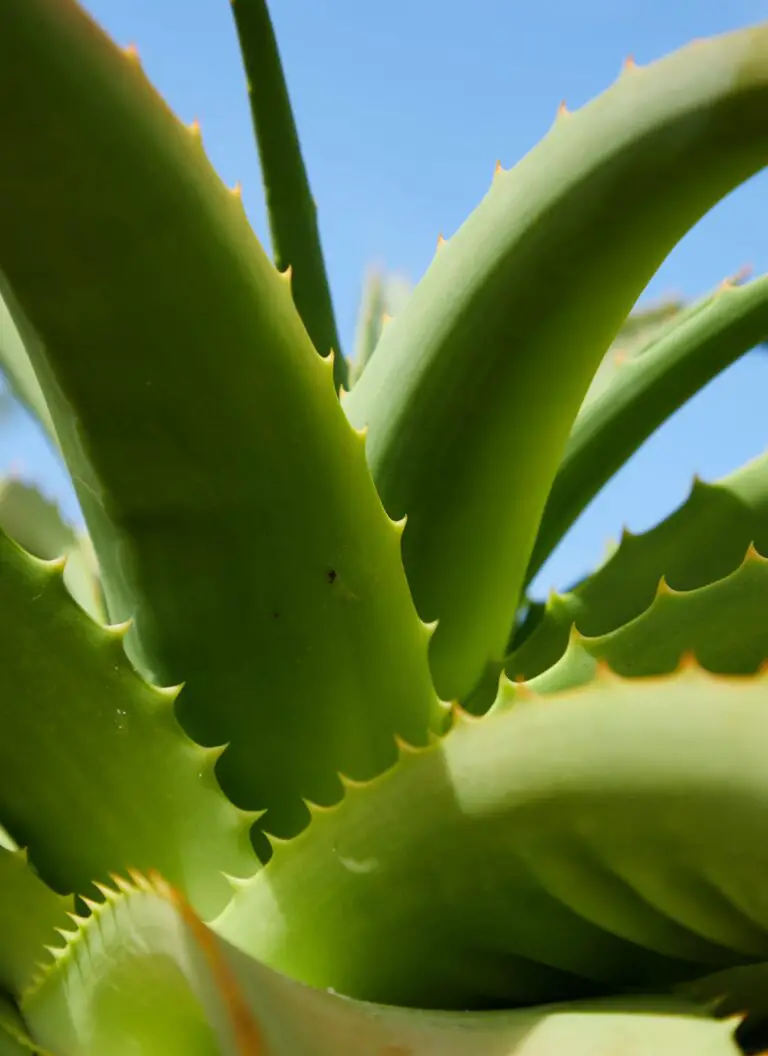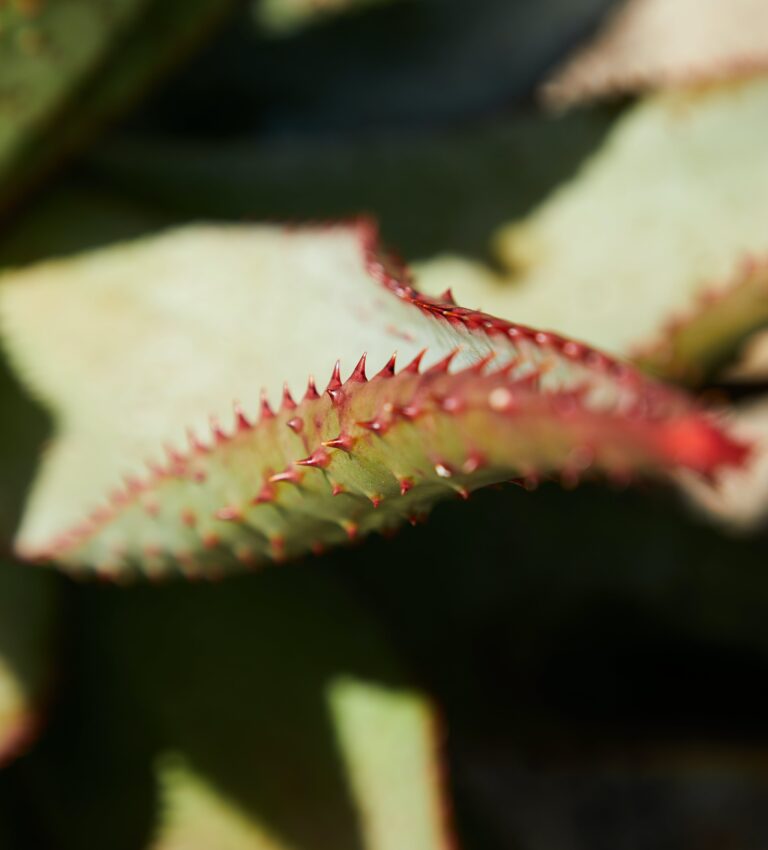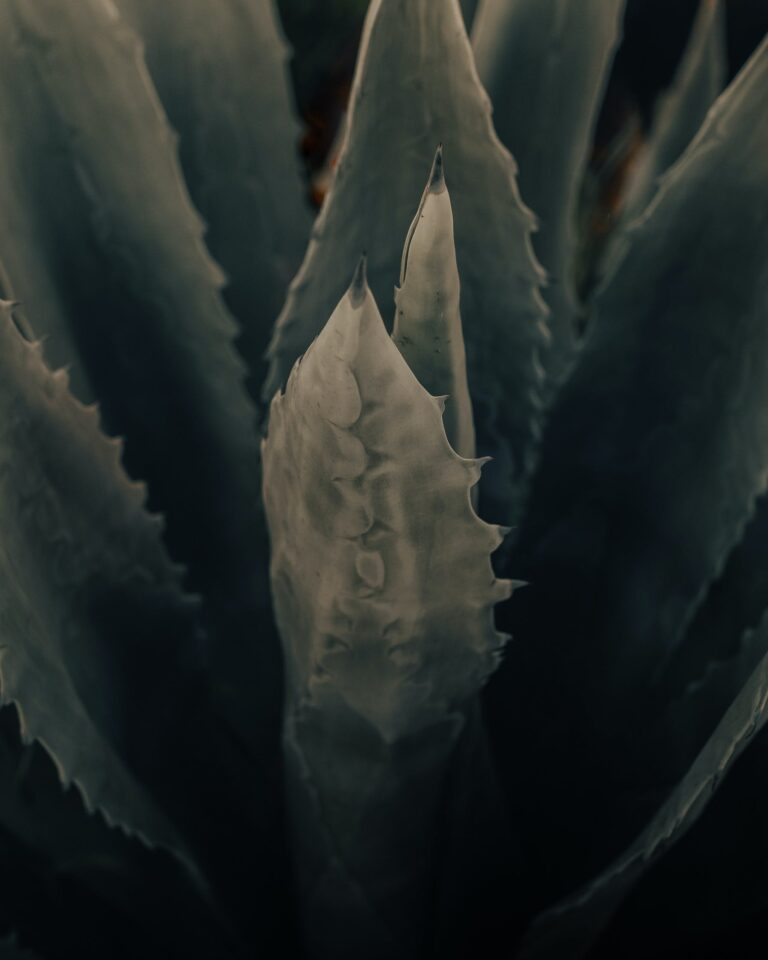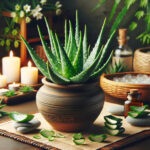Introduction to Aloe aculeata
Picture this: you’re wandering through a sun-soaked South African veldt when you stumble upon a fascinating aloe with an unforgettable aura. This is the Aloe aculeata, a wonder of nature that combines breath-taking aesthetics with surprising curative powers.

Aloe aculeata, affectionately known as the Prickly Aloe, is an enticing gem in the world of succulents. This solitary evergreen originates from the rocky terrains of South Africa and Zimbabwe. With its stems obscured by dense, spirally-arranged leaves, it presents a striking spectacle that’s hard to forget.
But there’s much more to this prickly aloe than meets the eye. Its distinct features and characteristics set it apart from the 500 species of aloe. The Aloe aculeata grows up to 60 cm high and measures 30-100 cm in diameter when unrestricted. Its label ‘aculeata’ stems from the Latin term ‘aculeatus’, suggesting the plant’s prickly, cutting edge.
The spear-like leaves of the plant have an alluringly dark green hue with a blue-ish tint, accented by brown, spiny margins. It’s not just a beauty to behold; it’s a botanical marvel with several utilitarian benefits to offer.
While the Aloe aculeata might be infamous for its prickly demeanor, it’s the plant’s curative powers that steal the spotlight. The succulent’s sap is enriched with bioactive compounds that boast of antiseptic and anti-inflammatory benefits. A living testament to the saying ‘beauty is more than skin deep.’
Understanding the Physical Attributes of Aloe aculeata
If you’ve ever come across an Aloe aculeata, also referred to as the ‘Prickly Aloe,’ you were probably captivated by its unique physical aesthetics. This section aims to delve into a vivid description of the physical attributes of this beautiful yet often misunderstood succulent. So, let’s get started, shall we?
So, what does the Aloe aculeata look like? Aloe aculeata is famed for its impressive rosette-shaped silhouette. Picture a full circle of thick, stout leaves neatly arranged in a flowing, clockwise manner.
Size and Shape
While the Aloe aculeata appears small, it is quite a delightful contrast of size and dimension. On average, the Aloe aculeata grows to a height of about 0.6-0.9 meters. Quite an impressive stature for a ‘small’ plant, don’t you think? The leaves, in all their fleshy glory, commonly range from 15 to 30 centimeters long. However, their awl-shaped tips are the real winners, adding a subtle dramatic flair to the general facade of the plant.
Color and Flower
\ Aloe aculeata boasts a typically green color that varies from light to dark shades depending on sunlight exposure. Interesting fact, during cold weather or when under stress, the leaves may adopt a charming reddish-brown hue, a spectacle that resonates with lovers of vibrant plant colors.
Speaking of colors, the Aloe aculeata ushers in quite the show during the blooming season with its breathtakingly bright-orange flowers. These blossoms, held aloft on tall stalks, seemingly reach out to the sky in their visual splendor.
Distinctive Prickles
The linchpin in our appreciation for Aloe aculeata’s aesthetics, however, lies in its distinctive prickles. Protruding from the leaf margins, these prickles lend a unique personality and arguably the ‘prickly’ to the Prickly Aloe, and they certainly are a sight to behold.
An Intricate Beauty
In essence, the Aloe aculeata is a potpourri of intricate aesthetics coalescing into one beautiful, powerful entity. There is an undeniable allure in its tenacious leaves, a sort of stoic beauty subtly softened by the elegant curvature of its form. The prickles? They add just enough edge to keep it interesting.
In the end, understanding the physical attributes of Aloe aculeata opens up a new perspective for admiring this resilient succulent, paving the way for a deep appreciation for its unique beauty and curative power.
Habitat and Cultivation of Aloe aculeata

Truly befitting of its nickname ‘Prickly Aloe’, the Aloe aculeata flourishes in terrain that would appear somewhat inhospitable to most life forms. From a glance at its natural habitat, one might mistake it for an arid lifeless desert scape; however, this could not be further from the truth.
Native to South Africa, the Prickly Aloe clings to life in the stony ridges and hilly terrains, adjusting freely to the vastly fluctuating weather conditions typical of its home range. Driven by the harsh sun during the day, and chilling winds at the dusk, it embrace of extremes is a testament to its inherent willpower.
Starting Out: Soil and Watering Needs
But, how do we bring a bit of this resilient, and undeniably captivating flora to our homes? The path to successful cultivation of the Aloe aculeata begins with the understanding of its basic soil and watering needs. Like many succulents, Aloe aculeata prefers well-drained soil to prevent root rot and other water-related diseases. A mixture of equal parts potting soil, coarse sand, and pumice or perlite mimics the natural gritty soil of its habitat and provides excellent drainage.
The watering schedule for Aloe aculeata is quite simple – allow the soil to completely dry out between watering. Overwatering is a common mistake made by owners of succulent plants and can lead to disastrous outcomes. Remember, their native habitat is dry with sparse annual rainfall. The Aloe aculeata is accustomed to employing its own water storage strategies to survive; so, when in doubt, err on the side of underwatering.
Nailing the Light Exposure and Temperature Tolerances
When it comes to light exposure, Aloe aculeata thrives under full sun to partial shade. A south-facing window is an ideal indoor location for the prickly aloe. As per temperature tolerance, this prickly wonder is hardy and withstands temperatures as low as -3.9°C (25°F) in winters. However, if the mercury drops below this, it’s a good idea to bring the plant indoors or provide some form of cold protection.
Overall, Let’s Keep It Simple!
Your Aloe aculeata does not ask for much attention, but when it does, it is important to heed the call. As our understanding of this intriguing plant deepens, we learn to appreciate its strengths and how it has applied these to thrive in the raw wilderness. With a little bit of nature’s insight, brought to you courtesy of the Aloe aculeata, your journey in its cultivation can be an exciting adventure.
As you embark on this journey, remember that learning about your plant is as important as caring for it. For a comprehensive Aloe aculeata cultivation guide, always stay curious, observant, and ready to respond to your Aloe’s needs. And what comes out of this experience is an enriched green thumb, and a beautifully thriving Prickly Aloe!
Healing Powers of Aloe aculeata
There’s a certain serene beauty that succulents provide, but Aloe aculeata, or prickly aloe, takes it a step further with its therapeutic prowess. While its aesthetically pleasing structure might be the initial draw, Aloe aculeata’s appeal goes more in-depth, with its potential to offer wonderful health benefits.

Revered in traditional medicine, Aloe aculeata has been a go-to remedy for various ailments. Let’s take a journey back to our ancestors’ times and the ancient practice of treating wounds. Picture this – a warrior comes back from a skirmish with a gash on his arm. What’s the first thing the healer reaches for? That’s right, a leaf from the Aloe aculeata plant. The sap from its thick prickly leaves was used as a salve applied to wounds to promote faster healing and prevent infections.
Aloe aculeata in Skincare
Moving from the ancient battlefield to today’s modern society, the prickly aloe still has its place firmly rooted, especially in skincare. The cosmetics industry has fully embraced the plant’s benefits, incorporating Aloe aculeata extract in a range of products, from face creams and body lotions right through to after-sun treatments.
Why, you might ask? Well, it’s all to do with the gel inside those prickly leaves. The gel contains two hormones – Auxin and Gibberellins – that help in wound healing and have anti-inflammatory properties. This makes Aloe aculeata ideal for use on skin irritations like sunburn and acne. So, the next time you’re admiring your houseplant, remember that it’s not just a pretty face – it’s a skincare superstar waiting to be discovered!
Important Precautions when using Aloe aculeata
Any herbal remedy as potent as the prickly Aloe, or Aloe aculeata, demands respect and caution in its use. Don’t let its mesmerizing aesthetics lull you into overlooking the essential safety considerations associated with it. In this guide, we’ll be exploring important precautions to take when using this remarkable plant.

Potential Side Effects
Despite the many therapeutic benefits of Aloe aculeata, improper use can lead to potential side effects. Sometimes, excessive use of its sap can cause skin irritation, particularly in individuals with sensitive skin. Imagine slathering on a moisturizer only to end up with an itchy, red rash! It’s crucial that before you incorporate any new plant into your routine, especially one as potent as Aloe aculeata, you test a small amount on your skin first.
Understanding Interactions
Aloe aculeata isn’t just a solo player; it interacts with other substances you may be ingesting or applying onto your skin. Let’s say you’re on medication for blood-thinning. Coupling it with the use of Aloe aculeata, which contains natural substances that can further thin the blood, may enhance the effects of your medicine. This could unintentionally result in a condition known as hyperviscosity, wherein the blood becomes too thin. Therefore, it’s always best to consult your doctor about such interactions.
By taking necessary precautions, we can enjoy the curative powers of Aloe aculeata without jeopardizing our health. So the next time you find yourself captivated by the aesthetic appeal of this prickly plant, remember these guidelines. Use it responsibly and allow this natural powerhouse to promote healing and wellness in your life.
FAQs about Aloe aculeata
Let’s get straight into some of the most frequently asked questions about Aloe aculeata, fondly known as the Prickly Aloe. This mesmerizing succulent isn’t just a beauty to behold but a plant with a plethora of uses.

How do I propagate my Aloe aculeata?
Propagating your Prickly Aloe isn’t a Herculean task. It’s as simple as taking a mature pup from the mother plant, allowing it to dry out for a day or two, and then replanting in well-draining soil. Remember to keep the newly planted Aloe in a shaded area until it establishes.
What are the care requirements for Prickly Aloe?
Given its hardy nature, caring for an Aloe aculeata is more about knowing what not to do. Resist the urge to overwater, especially in colder months as it could lead to root rot. Also, while it does enjoy the sun, it’s best to acclimatize it slowly to avoid sunburns.
What are the uses of Aloe aculeata?
Apart from stealing the show in any garden setup with its striking rosettes, Aloe aculeata has renowned medicinal properties. Just like its cousins Aloe Vera, it’s reputed for its soothing and healing attributes. Traditionally, its sap is used to expedite wound healing and soothe skin irritations.
Any potential issues I should be aware of?
While generally resistant to pests, overwatering your Aloe aculeata could make it susceptible to diseases like root rot. Additionally, watch out for pests like aphids and scale insects, particularly in the warm seasons. If spotted early, a simple treatment with insecticide soap should resolve the issue.
The Prickly Aloe, in all its spiky glory, is truly an asset in any succulent collection. Navigate your Aloe aculeata journey with these insights, and you’ll witness its aesthetics and power firsthand.



